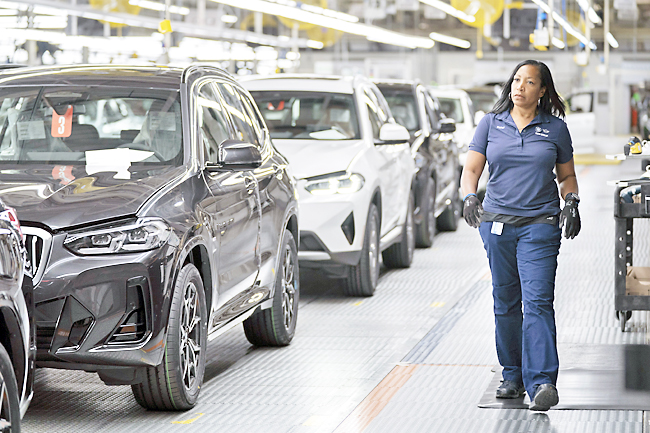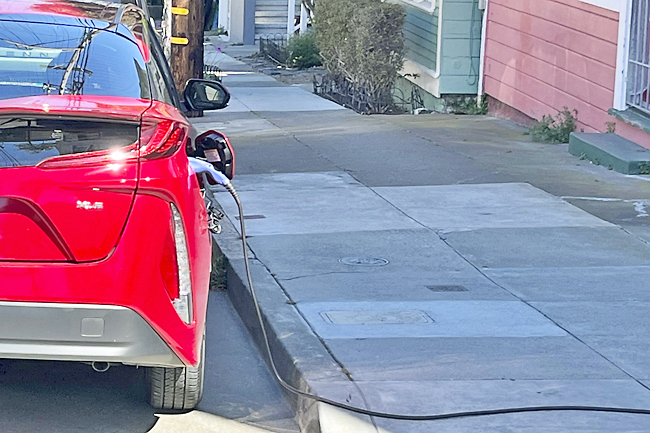THE STAR – Electric vehicles, or EVs in short, are the buzzword the world over.
Globally, the push for EVs is led by governments providing support in the form of policies based on the idea of reducing carbon emissions and increasing the use of renewable energy.
In Malaysia, there are import and excise duty exemptions for EVs. The exemptions will last until December 31, 2025 for locally assembled models (CKD), but only until the end of 2023 for completely built-up (CBU) vehicles.
Some other countries have more robust EV policies. Thailand has a policy to move 30 per cent of total automotive production to EVs by 2030, while the Indonesian government has set a goal for EVs to make up 20 per cent of all domestic cars manufactured by 2025.
Singapore is even more aggressive, targetting to cease new diesel car registrations from 2025 and requiring all new car and taxi registrations to be of cleaner-energy models from 2030.
Not surprisingly, the take-up rate of EVs in Malaysia remains low.


In 2021, it was reported that only 274 EVs were sold from a grand total of 508,911 units, which is a paltry 0.05 per cent.
From January to May this year, 390 EV units were sold in Malaysia, with the percentage of EV to internal combustion engine or ICE cars increasing to 0.17 per cent.
Globally, sales of EVs doubled in 2021 from the previous year to a new record of 6.6 million, a steep rise from the 120,000 units sold in 2012. In the first quarter of this year, two million EVs were sold, up 75 per cent from the same period in 2021.
Experts familiar with EVs are offering varying views as to how the industry in Malaysia can become mainstream. Industry players say that a specific roadmap from the government is essential.
Malaysia Automotive, Robotics and IoT Institute (MARii) chairman Datuk Phang Ah Tong noted that there are huge opportunities for Malaysia to tap into the EV eco-system.
“With EVs having a lot of electronic components and with Malaysia already having a solid semiconductor base, it is a shoo-in for the country to play into the space.
“It is best for Malaysian companies to aim to support EV development such as providing components, rather than to try and make and build our own EVs,” he told StarBizWeek.
Industry checks reveal that a number of China-based EV makers are scouring the region including Malaysia with the hope of setting up plants here or securing parts.
Some notable EV investments into Malaysia include the MYR1 billion that Fieldman EV Sdn Bhd is investing in Melaka to construct the nation’s first EV assembly plant, and the MYR7 billion Samsung SDI Energy Malaysia Sdn Bhd invested to open its EV battery cell manufacturing facility in Seremban, which fully opened its doors in July.
Still, EVs are not mainstream in countries like Malaysia for one main reason. They cost more.
Another problem is the lack of infrastructure, namely, sufficient charging stations.
PRICE OF AN ELECTRIC VEHICLE
Bermaz Auto Bhd group chief executive Datuk Francis Lee said with EV cars generally being priced at a minimum of MYR150,000, there is insufficient volume to drive up the sector.
“We need a nation-wide policy to push the industry. Back home, as announced in Budget 2023, the government is planning to extend the import and excise duty exemption for CBU EVs to December 31, 2024, but they did not mention anything about the CKDs,” said Lee.
Lee believes that the extension to 2024 for CBUs would instead encourage local auto players to import CBU vehicles, rather than look to assemble these vehicles. “There has to be a commitment to the CKD programme, such as an extension of the duty exemption for another five or six years, perhaps,” he said.
Datuk Thiruchandran Thiruchelvam from a local firm venturing into EV charging infrastructure called Charge N Go Sdn Bhd is more optimistic about the local EV scene, noting that prices will come down.
He said EV battery prices have dropped by almost 90 per cent over the last 12 years due to improvements in battery technology and economies of scale. This is significant because the battery typically accounts for 40 to 50 per cent of the cost of an EV, he added.
“Many analysts forecast that EVs could reach price parity with ICE cars sometime within the next two to five years.
“Once that happens, we can see large-scale adoption of EVs,” said Thiruchandran.
In terms of the pricing of EVs, it is notable that Sime Darby Motors Malaysia is targetting to bring in the Dolphin EV from Chinese EV manufacturer BYD Auto Co Ltd. The Dolphin is estimated to be priced under MYR100,000 becoming the most affordable EV in Malaysia.
Describing some of the challenges Bermaz is facing in its attempt to secure EV distribution contracts with Chinese producers, he said most of these companies expect immediate results in terms of volume, probably because that is the environment the much bigger Chinese market expects of its players.
Lee said, “In our discussions with these EV producers, we discovered that the immediate expectation they would want from us is volume.
“In other words, how many units we can sell. This is very short-term thinking, but brought about understandably by the massive and competitive Chinese market.”
FUEL SUBSIDY REMOVAL COULD BOOST EV USAGE
Another factor to consider in Malaysia’s EV journey in Malaysia is the high possibility that the government will remove fuel subsidies.
Charge N Go’s Thiruchandran noted that electricity as a fuel source is already cheaper on a per kilometre basis relative to petrol and the only challenge is that the cost of an EV is more than the average ICE vehicle.
“Therefore, any reductions in the fuel subsidy will obviously increase the amount of comparative savings, making the EV more viable on a total cost of ownership basis.”
On the other hand, Bermaz’s Lee is of the belief that things may take a little more time and the execution of the subsidy removal is key.
“Firstly, we need to see how this subsidy removal is executed.
“Secondly, even if subsidies were removed and the price of RON95 were to increase to MYR3 per litre from the current MYR2.05, the M40 (middle-income) segment may still prefer paying more for petrol over buying an EV car, because the EV car is still not within their affordability range,” he explained.
The lowest priced EV car at the moment, the Hyundai Kona, is priced around MYR150,000, which translates to an instalment of about MYR2,000 monthly, Lee said, and this may still be a burden to many in the M40 group.
Challenges related to the charging of EVs remain a problem. The general thinking is that there are not enough charging stations and it takes too long to charge EVs.
Home charging also requires homes to have three phased electricity wiring. Older apartment blocks do not have charging facilities, unlike newer developments.
THE CHARGING PROBLEM
Charge N Go’s Thiruchandran, though, pointed out that the charging of an EV battery is similar to charging a mobile phone overnight.
He said, “A relatively low-cost 7kW AC charger would be sufficient to fully charge most EVs overnight.
“Also, as most EVs have a range of between 300 kilometres and 400 kilometres on a full charge, the average user is not going to fully utilise this range within a day. Hence, they would just need a couple of hours every night on their home charger to top up their charge.”
National power supplier Tenaga Nasional Bhd (TNB) has pledged to invest MYR90 million to increase the number of charging points for EVs on expressways. TNB said the rationale behind this investment is to solve the challenges of charging infrastructure, to better ensure that the anxiety of EV drivers on Malaysian highways can be dissipated.
“But we also require other parties such as highway concessionaires and the city councils to give their cooperation for the charging point operators to deploy our chargers on Malaysian roads,” TNB Programme Management Office Project Director-Electric Vehicles Mohd Junaizee Mohd Noor told StarBizWeek.
One interesting point that Mohd Junaizee raised is this: all vehicles including public buses, lorries and trucks entering neighbouring Singapore will soon have to be only EVs.
This is because the city-state will no longer allow the registration of diesel-powered cars and taxis from 2025, he pointed out.
“Therefore, the requirement for the fleet industry such as buses, lorries and light vehicles in Malaysia to convert to EVs is getting more pressing,” he said.





